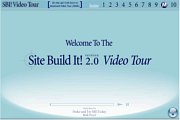|
Language Translation Software:
|
| Rule-based: The translation system uses a set of grammar rules for each language to analyze words, grammar, and punctuation and produce a translation. Statistical: The translation system has millions of previously translated texts fed into its database in the source and target languages. The system produces translations by looking for statistical relationships between the words in the database. Example-based: The translation system uses a set of sentences in the source language and their corresponding translations in the target language as examples to translate other similar sentences by analogy. |
Systems for automatic translation
Language translation software for automatic translation has been developed on the basis of three approaches: rule-based (traditional), statistical and example-based. To improve the output quality of machine translation systems, combinations of these approaches are used too.
In the attempt to satisfy all categories of potential users, developers of language translation software have developed different automatic translation products:
- for general public (e.g. Systran Web Translator),- for corporations (e.g. @promt NET Professional),
- for professional translators (e.g. Personal Translator PT2008 Professional),
- for websites to translate webpages (e.g. InterTran Web Site Translation Server),
- for use with various mobile/hand-held devices (e.g. Honyaku Kore-Ippon for Zaurus).
In addition, there are some systems to translate speech (e.g. Multi-language Translator).
All these systems can be bilingual or multilingual. An online language translation service is another way to use machine translation. Often, this service is provided free of charge. Among the most popular providers of the free online translation service are Babel Fish, Google Translate, and FreeTranslation.
| Translation memory: A software tool that enables professional translators to create and store their translations for later reuse. Translator workstation: A system that enables professional translators to access dictionaries, glossaries, and terminological resources and includes such features as multilingual word processing and translation memories. Software localization tool: A tool to translate and adapt computer software manuals to the cultural context of countries where this software will be used. |
Translation support tools
Support tools form another class of language translation software. They include: electronic dictionaries (e.g. Lingvo), translation memories (e.g. Wordfast), translator workstations (e.g. Transit), software localization tools (e.g. SDL Passolo), terminology management systems (e.g. MTX), as well as pre-editing and alignment tools.
Language translation software is still in its infancy. Current machine translation systems still produce output of low quality. Nevertheless, language translation software has been improved over the last decades due to continued research and development efforts and has become an important support tool for communication and translation.
Thus, with the invention of translation memories, the productivity of professional translators increased notably; machine translation systems that are limited to specific domains and use controlled language are helpful for large multinational companies and organizations (such as the European Commission) with large volumes of documentation.It is unlikely that automatic systems will be able to produce high quality translations in the foreseeable future, but they will improve, their role in the information exchange will increase, and we will see their new practical applications.
Further reading:
Major Translation Tools In Translation Industry
Spoken Language Translation Tool: Speech Recognition and Translation
A list of free translation software
Didn't find what you were looking for? Use this search feature to find it.
Return from Language Translation Software Page
to Home Page
__________________________________________________________________ Website owner: Irina Lychak, self-employed freelance linguist, Russian translator, Ukrainian translator, Kiev (Kyiv), Ukraine
Not happy with the rates you pay for professional translation? Look for cheaper ways to translate your websites, blogs and articles? Try this translation software. Even though high-quality, professional translation is rather expensive and takes time to do. If you have neither enough time nor money to spend on professional translators, but are still interested in translation of your website or blog and quality is not of utmost importance to you, check if this software can help you. Almost everyone would like to quit their day job, or work from home, or needs extra money. What if you could build for yourself an online business that could give a full-time income... With Site Build It! this dream can become a reality. I do not offer you another get-rich-quick scheme. I am talking about a complete and proven step-by-step process that will require your time and work. But it is a doable process that has given many people a new income and a shot at a new life. Here's some people who are doing it. Site Build It! is more than just hosting or site-building. It provides all the tools you need for getting traffic, sending out e-mails, adding a blog, and monetizing your site. And you don't have to be a techie to use it. Want to learn more? Take the Video Tour. It will show you what I mean. Invest the most Click, sit back, and The process works! I know because I've done it myself. You are reading now my site built with the help of Site Build It! tools. Two years ago I have jumped at the opportunity to turn my dreams to reality and have never regretted that decision. What stops you? You can give yourself this opportunity too! Site Build It! offers a No-Risk Money-Back Success Guarantee that means you have nothing to lose. |









